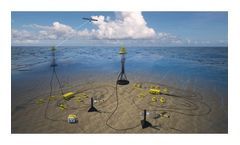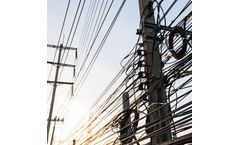- Home
- Applications
- power cable
Refine by
Power Cable Product Applications
5 applications found
One such challenge is the supply of electrical power to support exploration activities in oil and gas platforms. Conventional methods using diesel generator sets have proven severely insufficient due to reliability, maintenance and refueling costs. Other approaches leveraging umbilical power cables from the shore are cost prohibitive ranging from $1M to several $M per ...
ByOcean Power Technologies, Inc based in Monroe Township, NEW JERSEY (USA)
Our world is becoming more connected, and SPI is proud to be a part of the next generation in communication technology. Working with major communication service providers, our polyurea products are being utilized for micro trenching, and encapsulation of fiber optics/broadband data cables. Providing service to consumers in urban neighborhoods typically involved torn up streets for days. SPI’s innovative polyurea delivers a quicker solution, enabling installation through narrow trenches cut in existing ...
BySpecialty Products Inc. (SPI) based in Lakewood, WASHINGTON (USA)
The Power to Deliver Non-Stop Programming. Cable operators are taking a leadership role in demonstrating how their businesses can provide world class service in an environmentally friendly way by incorporating fuel cell technology into their ...
ByAltergy Systems Corporate based in Folsom, CALIFORNIA (USA)
As the world continues its rapid urbanisation, planning strategies, most notably for public transport lines, must adapt to meet demand. Alongside the infrastructure challenges posed by the development of new megacities, the railway industry must also consider escalating customer expectations, fierce competition and frequent advancements in technology. Railway systems themselves have undergone an intense period of modernisation with complex automation developments such as driverless trains and on-board ...
ByPrysmian Group based in Milan, ITALY
Different types of power lines serve to transport electricity from the generation site to the end-users. Most commonly, and for efficiency reasons, the electricity is transported over long distances as alternating current at 50 or 60 Hz, carried overhead or underground using high voltage power lines or cables. Over very long distances or underwater, transmission occurs sometimes with high voltage direct current (HVDC). Power lines transmitting ...
ByInternational Commission on Non-Ionizing Radiation Protection (ICNIRP) based in Oberschleissheim, GERMANY




